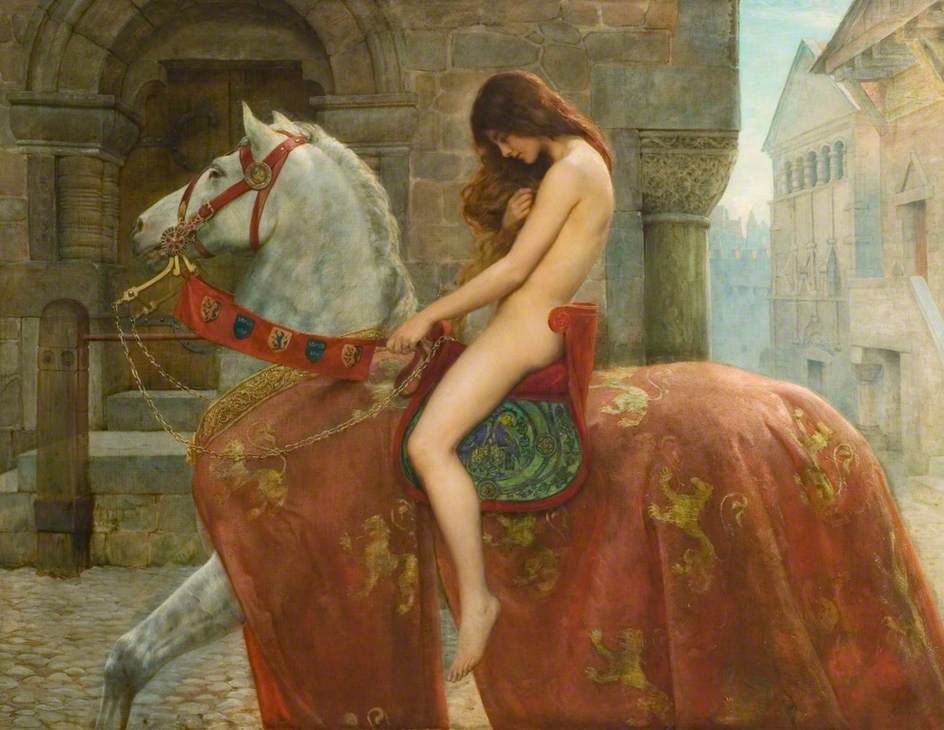During the 11th century, the town of Coventry was suffering grievously under the earl’s oppressive taxation scheme. The earl’s wife, Lady Godiva, took pity on the people and pleaded her husband to lift the heavy taxes. The husband refused over and over, until one day in exasperation he made a wager: if she would ride through the streets of Coventry naked, he would grant her request. The earl believed that she would never undertake such a shameful, scandalous act. Lady Godiva pondered on the decision for a while, but then agreed on the condition that her husband keep his word.
Rumour quickly spread of what Lady Godiva was willing to do for the sake of her people. Out of respect and appreciation, the people of Coventry mutually agreed to stay indoors behind shuttered windows to preserve her dignity as she passed. On the fateful day, Lady Godiva set out on her white horse, stark naked and only draped by her long luscious hair. The entire town was silent, with every person in their home with the windows closed shut so that the Lady was the only one passing by, with no one to see her. However, one man, a tailor by the name of Tom, could not overcome his curiosity and lust and decided to peep through a hole in his shutter to gaze at her nude body. At that moment, he was struck blind, being punished for his voyeurism (this is the origin of the term “peeping tom”). In the end, the earl reluctantly abolished the onerous taxes, admiring his wife’s bravery and the respect the people had for her.


